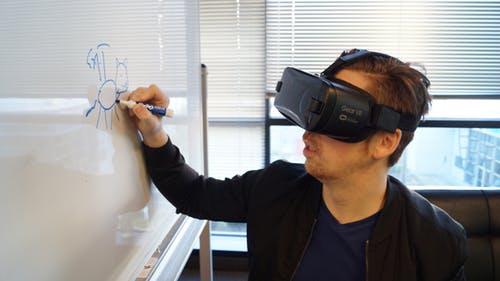We are living in a modern age. Technology has woven its way into almost every facet of our lives, from smart temperature controls to Bluetooth-enabled vehicles. As a result of this technological takeover, even learning opportunities — whether they’re in the classroom or online — have begun to incorporate innovative new tech into lesson plans; most notable is the use of virtual reality (VR).
To the Average Joe, virtual reality describes a game, not a learning tool. While VR may have been marketed that way — virtual reality designers and engineers have created videogames allowing users to explore oceans, space, solve mysteries, and even perform surgery — its true potential spans far beyond basic entertainment. In order to truly appreciate the practical applications of virtual reality in the modern world, we must understand how education has changed over the years.
Ways of Old
Education is founded upon the information. It sounds inherent because it is; we’re trying to teach our children (and anyone who wants to learn) to understand the information we’ve learned throughout the years, whether it’s through family, experience, or schooling. What’s changed is the way we transfer that information. The main premise remains the same: fact retention.
As students, we’re exposed to a plethora of knowledge, both useful and not. Tests and quizzes were designed to measure our intelligence based on what we could retain and repeat, but it’s vital to know that being informed isn’t the same as being educated; memorization is different from understanding. Where youths of old were forced to memorize flashcards, current generations are able to utilize a new platform where they can experience as much as see or hear.
The advent of virtual reality technology has revolutionized the learning experience. Although the understanding of specific learning styles has been debunked (i.e., visual, auditory, and kinesthetic), virtual reality is able to break any and all limitations. The effect is profound; suddenly, students who couldn’t imagine the structure of DNA can see it play out in front of them; suddenly, the ability to see different chemical compounds and their shapes were possible. Virtual reality allows most students to overcome their troubles of comprehension through a realistic and believable interactive experience.
The Benefits of VR in the Classroom
Virtual reality can create any number of scenarios for users to experience, regardless of the number of designers and engineers working on the project; one single VR helmet can provide the same experience and understanding as an entire science lab. Let’s take a look at the benefits offered through such advanced interactive technology.
- Learn by doing. When you’re focused on facts, it’s almost impossible to remember everything. Virtual reality creates an experience that can be lived rather than seen. Being able to move around words, compounds, and formulas allow students to truly understand the difference their actions make as well as physically see what they’re creating in a 3-D space.
- Scale experiences. Not all schools or universities can afford comprehensive lab equipment. Whether you have a class size of 12 or two hundred, you’ll be able to offer the same experience to all of your students. Dissect frogs, examine an atom, or take a peek at the outer atmosphere; anything you want to do can be done through virtual reality.
- Emotional connection. Whether they’re positive or negative, the major points of our lives are exceptionally poignant. This is because we experience a visceral reaction during, particularly strong moments. VR helps create such intense memories through a realistic, emotional experience that is second only to the real thing.
Virtual reality has opened the door for many students across the globe. Education isn’t always easy; with VR at their fingertips, understanding becomes more tangible.

